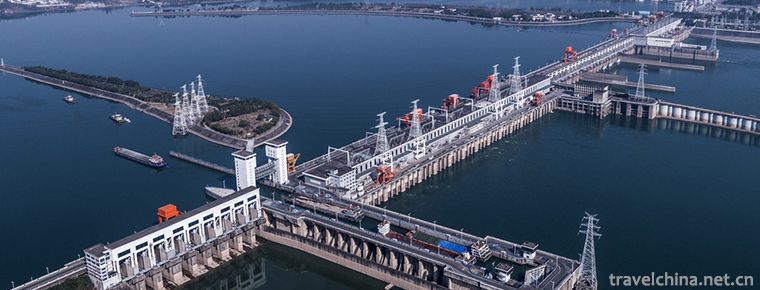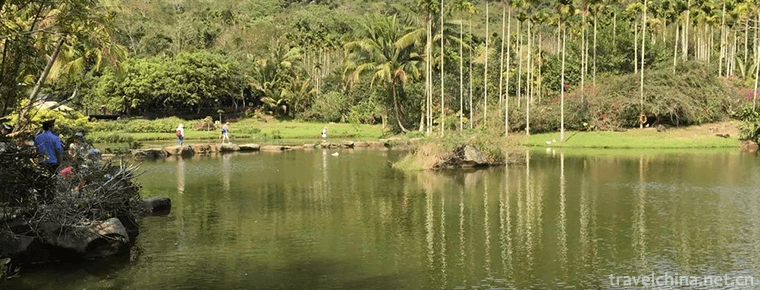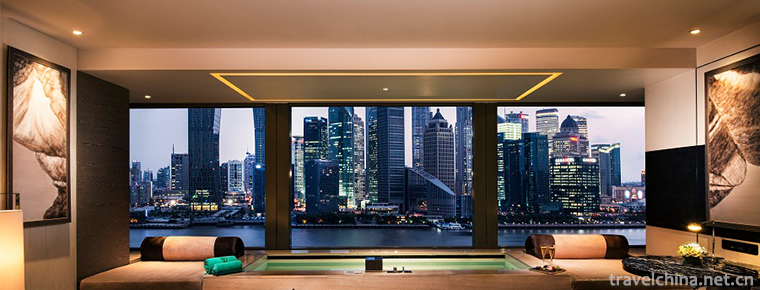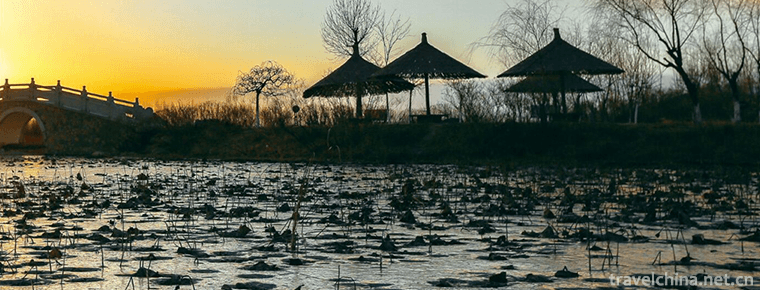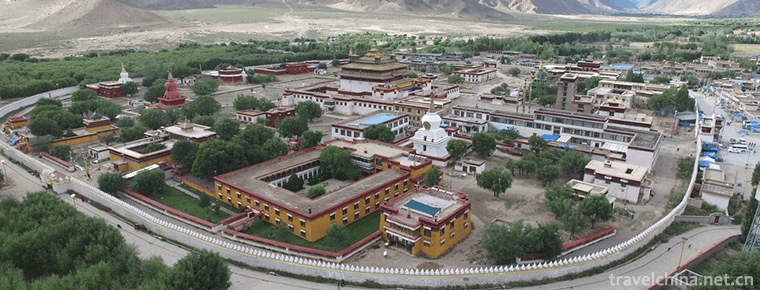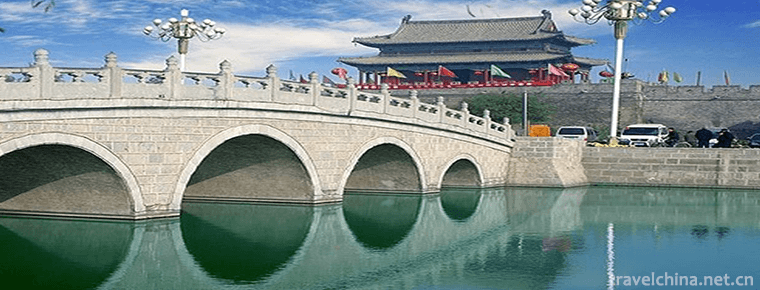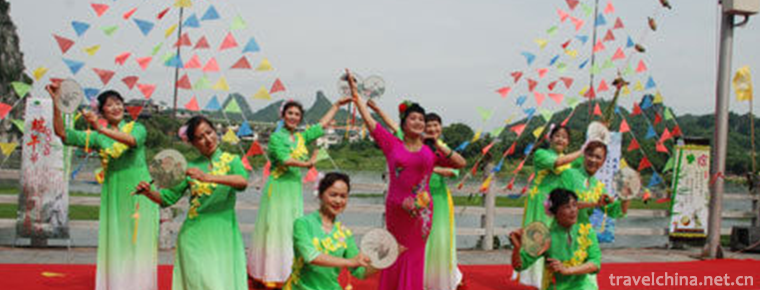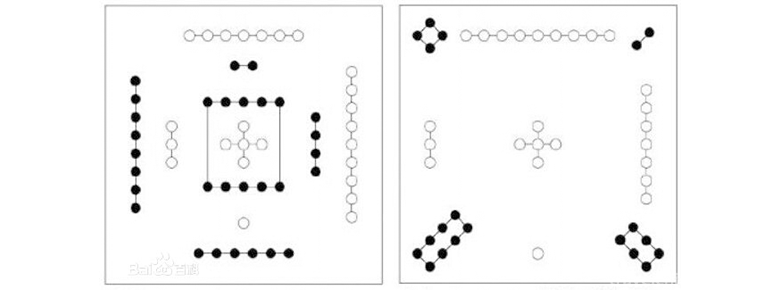Puning Temple
Puning Temple
Puning Temple is located in Chengde City, Hebei Province. It was built in the Qianlong period of the Qing Dynasty. The first half of the temple is Han-style, with the characteristics of traditional Buddhist temples of the Han nationality; the second half is Tibetan-style, built in imitation of the Sang Yi Temple in Tibet, and the two different styles of architecture are integrated. The whole monastery is magnificent and covers an area of about 23,000 square meters. The main Buddha statue of Puning Temple is Thousand-Handed Thousand-Eye Guanyin Bodhisattva, 27.21 meters high. It is a golden lacquer wood carving Thousand-Handed Thousand-Eye Guanyin Bodhisattva. The current presiding officer is Guru Morigan Tu Kumgang .
On December 29, 2018, it was named the Sixth Batch of demonstration zones (units) for national unity and progress by the National People's Committee.
Historical Evolution
Puning Temple was built in the 20th year of Emperor Qianlong of Qing Dynasty (1755). The army of the Qing Dynasty calmed down the rebellion of Gutaijidawazi in Junggar. In October of winter, four parts of Erut Mongolia came to visit Emperor Qianlong at the Summer Villa. In order to commemorate the federation, Qianlong imitated the precedent of Kangxi and Kalkha Mongolian Federation in establishing the Huizong Temple in Dorun. The Qing government built the Lama Temple in the form of Sanmoye Temple in Tibet.
In May 1760, the Qing government sent Bandi as a general to fight against the Dawazi rebellion, the reactionary leader of the Junggar Ministry in Erut Mongolia. The Qing army went directly to Yili, Xinjiang, and Dawazi escaped to the south of Tianshan Mountains. He was captured by Huo Jisi, the Uygur leader, and released into the Qing barracks. Amur Thana, another reactionary leader of the Junggar Ministry, continued to rebel after Hodges captured Dawazi and colluded with external forces such as Tsarist Russia. When attacked by the powerful Qing army, Amur Thana soldiers fled to Russia. Two rebel armies were wiped out. In order to commemorate the victory of the two rebellions, Qianlong held banquets and titles for the four upper nobles of Erut (Junggar, Dulbert, Glory and Masterpieces) at Chengde Summer Resort. Because the Qing government believed in Tibetan Buddhism, it imitated the Sangyu Temple in Tibet and built the first royal temple of the Qing Dynasty in the northern part of the villa, Puning Temple.
In 1985, it was approved as a place of religious activities by the Religious Bureau of the State Council.
In 1994, it was approved as a world cultural heritage by UNESCO. The temple covers an area of 33,000 square meters. It has 29 palaces, pavilions and various buildings. It has the pattern of integration of emperor and Buddha. It is not only the magnificent royal temple, but also the center of the world of Mandala Buddha, the sacred place of Buddha.
In 2007, Puning Temple was awarded the first 5A Buddhist holy places in China.
Temple preservation
In 1961, Chengde Puning Temple was approved by the State Council as a national key cultural relics protection unit.
On July 18, 2003, at the fourth meeting of the Standing Committee of the Tenth People's Congress of Hebei Province, the Regulations on the Protection and Management of Chengde Summer Resort and its surrounding temples were adopted to protect Puning Temple and other buildings through legislation.
On August 15, 2014, the conservation and renovation of ancient buildings in Puning Temple was completed. In accordance with the Qing Dynasty process, the restoration of cultural relics "as old as old", reproducing the style of ancient buildings more than 200 years ago. The protection and renovation of the ancient buildings of Puning Temple includes the Mountain Gate of Puning Temple, Tianwang Hall, Bell and Drum Tower, Daxiong Palace, Mahayana Pavilion, four major continents and eight minor continents. At the end of 2012, the project was officially started for renovation. It is also the third comprehensive and systematic protective maintenance of Puning Temple since the founding of New China.
In June 2017, experts in urban planning, cultural relics protection, architecture and landscape design in China reviewed the Urban Design of the South Side of Chengde Puning Temple in Beijing. Experts believe that the "Design" meets the requirements of the General Plan, famous cities and heritage conservation planning, and unanimously agree that the planning plan has passed the evaluation. The south side of Puning Temple is located in the core hinterland of the summer resort and the Outer Eight Temple scenic spot. The north side is adjacent to Puning Temple. The south side is facing Wulie River, the west is Puning Road, and the East is Anyuan Road. It covers an area of 24.4 hectares. According to Design, the south side of Puning Temple will be introduced into the central lake area, continue the axis of Puning Temple, open the corridor of landscape sight, set up public cultural building nodes, remould rich architectural texture at different levels, create pleasant street and courtyard space, integrate Chengde multi-culture, form the spatial pattern of "one core, one axis, six districts, multi-nodes", and lay down the cultural style of regional urban construction. Basal.
Buddhist activities
From June 12 to 14, 1995, in order to celebrate the 240th anniversary of temple building, the 240th anniversary celebration of temple building and the Daweide Fear Diamond Gathering Fair were held.
The Buddhist Dharma Exhibition was held from 26 to 28 June 1996. A Buddhist exhibition was held at the Fair. The embroidered statues are designed and manufactured by Ajia Living Buddha, the master of Tar Temple in Qinghai Province. The statues are 22.28 meters high and 16 meters wide. The etiquette is divided into three steps: inviting Buddha, offering bath and offering sacrifice. This is the first time since Chengde built the temple, which has never been held in northern China.
From June 11 to 14, 1997, the Hong Kong Return and Time Round Diamond Filling Fair was held. In order to celebrate the return of Hong Kong, the "Hong Kong Return Celebration and Time Round Diamond Filling Fair" was held.
December 15, 2006 (October 25, lunar calendar) is the solemn day of Master Zongkaba, founder of the Gelug Sect of Tibetan Buddhism. In order to promote Buddhism, monks of Puning Monastery hold the Thousands of Light Festival for the Great Law Society.
During the Spring Festival of 2016, Chengde Puning Temple, a Tibetan Buddhist temple in northern China, held the Lucky Fair for the Spring Festival and the Prayer Fair for the Spring Festival.
On May 28, 2016, Chengde Puning Temple held the opening ceremony of the construction of the "Master's Palace". Hu Xuefeng, the resident of Yonghe Palace in Beijing, Shi Minghai, the abbot of Berlin Zen Temple in Zhaoxian County, Hebei Province, Morigan Tu, the resident of Puning Temple, and Dailin, the president of Chengde Buddhist Association, jointly unveiled the "master's palace".
Tourism Information
Tourist routes
Puning Temple Entrance - Stele Pavilion - Tianwang Palace - Daxiong Palace - Mandala - Mahayana Pavilion - Puyou Temple - Puning Street (Exit).
traffic
Traffic Route: Chengde City, take Bus No. 6 and No. 26 to "Puning Temple" stop and get off.
Honors
In 1961, Puning Temple was approved by the State Council as a national key cultural relics protection unit .
In 1994, it was listed in the World Cultural Heritage List .
In 2007, it was named the first 5A Buddhist holy places in China.
On December 29, 2018, it was named the Sixth Batch of demonstration zones (units) for national unity and progress by the National People's Committee.
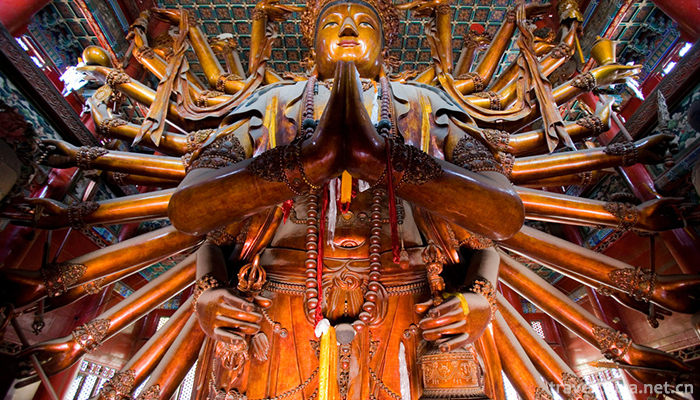
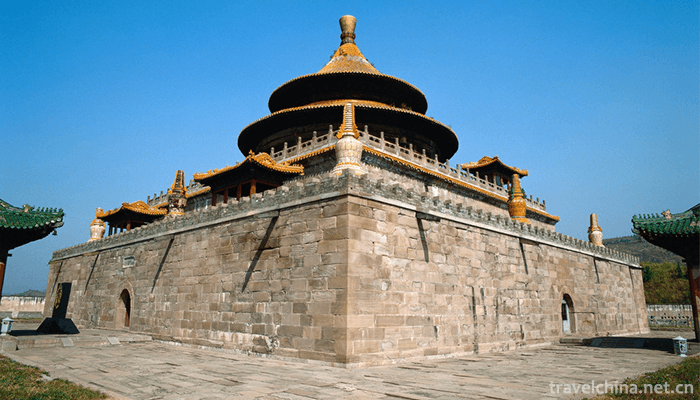
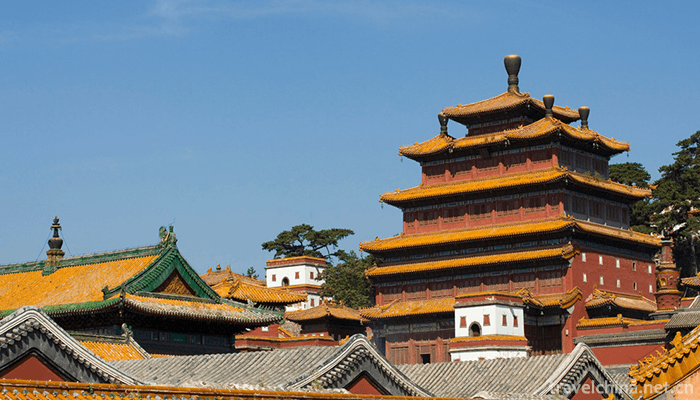
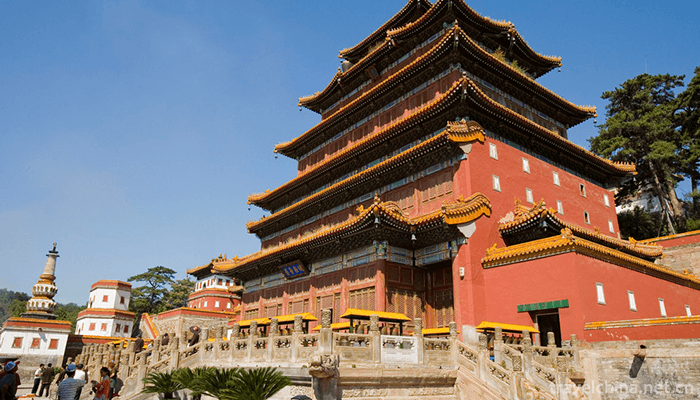
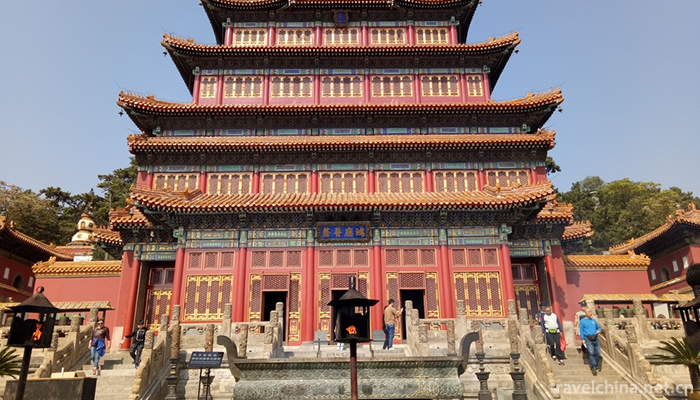
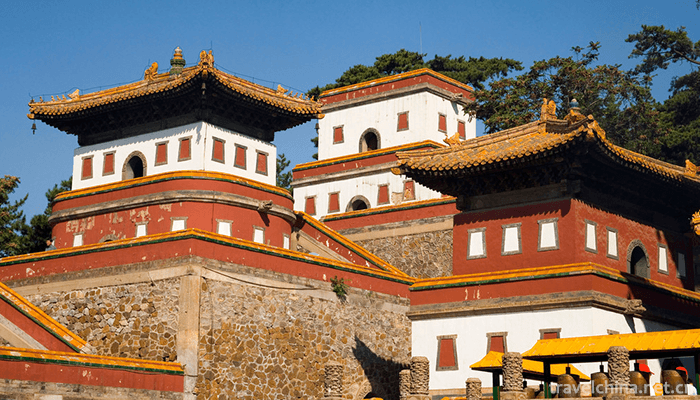
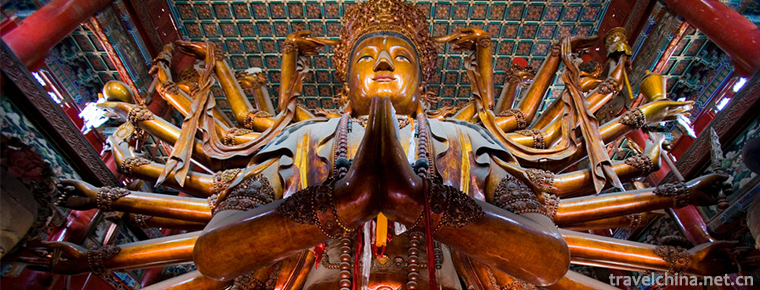
Puning Temple
-
Three Gorges Dam
The Three Gorges Dam is located in Sandouping Town, Yichang City, Hubei Province, China. It is 38 kilometers from the Gezhouba
Views: 179 Time 2018-11-11 -
Yanoda Tropical Rainforest Scenic Area
Yanuoda Tropical Rainforest Scenic Area is the only tropical rainforest located at 18 degrees north latitude in China. It is the concentration of five tropical rainforests in Hainan Island
Views: 140 Time 2018-12-12 -
Banyan Tree Shanghai On The Bund
Shanghai, one of the largest cities in the world, has a vibrant urban atmosphere, impressive urban skyline and rich and colorful culture. Located in the center of the city and resting on the Bank of H
Views: 509 Time 2018-12-16 -
Mingcui Lake National Wetland Park
Yinchuan Mingcuihu National Wetland Park is located in Zhangzheng Town, Xingqing District, Yinchuan City, Ningxia. It is 9 kilometers away from Yinchuan City and 3 kilometers
Views: 185 Time 2019-02-07 -
angye Temple
Sangye Temple, also known as Cunxiang Temple and Wubian Temple, is located in Sangye Town, Zaburg County, Shannan District, Tibet Autonomous Region, under the Habu Mountains on the North Bank of the Y
Views: 194 Time 2019-02-07 -
Shangqiu Ancient Culture Tourist Area
Shangqiu Ancient Culture Tourist Area is located in Suiyang District of Shangqiu City. Based on Shangqiu Ancient City, the area of 12.6 square kilometers is covered by Guidefu City
Views: 129 Time 2019-02-08 -
Shenzhen Maritime Pastoral
Shenzhen Maritime Pastoral Tourist Area is administratively located in Shajing Street, Baoan District, Shenzhen City. It is located at the eastern port of Pearl River estuary
Views: 215 Time 2019-02-08 -
Sama Festival of Dong Nationality
Sama Festival of Dong Nationality is spread in Rongjiang County, Liping County, Congjiang County and the surrounding areas of Dong Nationality in Guizhou Province
Views: 121 Time 2019-04-28 -
Guangxi Wenchang
Wenchang in Guangxi is short for Wenchang, also known as Wenjuzi and Xiaoqu. It is the traditional Solfeggio art popular in the northern Guangxi Mandarin area, especially in Guilin
Views: 126 Time 2019-05-01 -
Legend of Hetuluo Books
The legend of Hetu Luoshu is a folklore system about Hetu and Luoshu, which was born in Luoyang, Henan Province. It mainly includes the legend of Longma Negative Tu Temple and the offering of Luoshu b
Views: 210 Time 2019-05-03 -
Childrens play
Tongzi Opera is a form of performance in folk prayer activities in Jiangsu Province. It is popular in Nantong City of Jiangsu Province and in the central and western parts of Tongzhou City and its sur
Views: 214 Time 2019-06-23 -
Neijiang in yuan Ming and Qing Dynasties
In 1279, China was unified and the Yuan Empire was established. After more than 30 years of war between the end of Song Dynasty and the beginning of Yuan Dynasty, the system of Zizhou and Puzhou has not been restored except Jianzhou. In the 22nd
Views: 291 Time 2020-12-16
